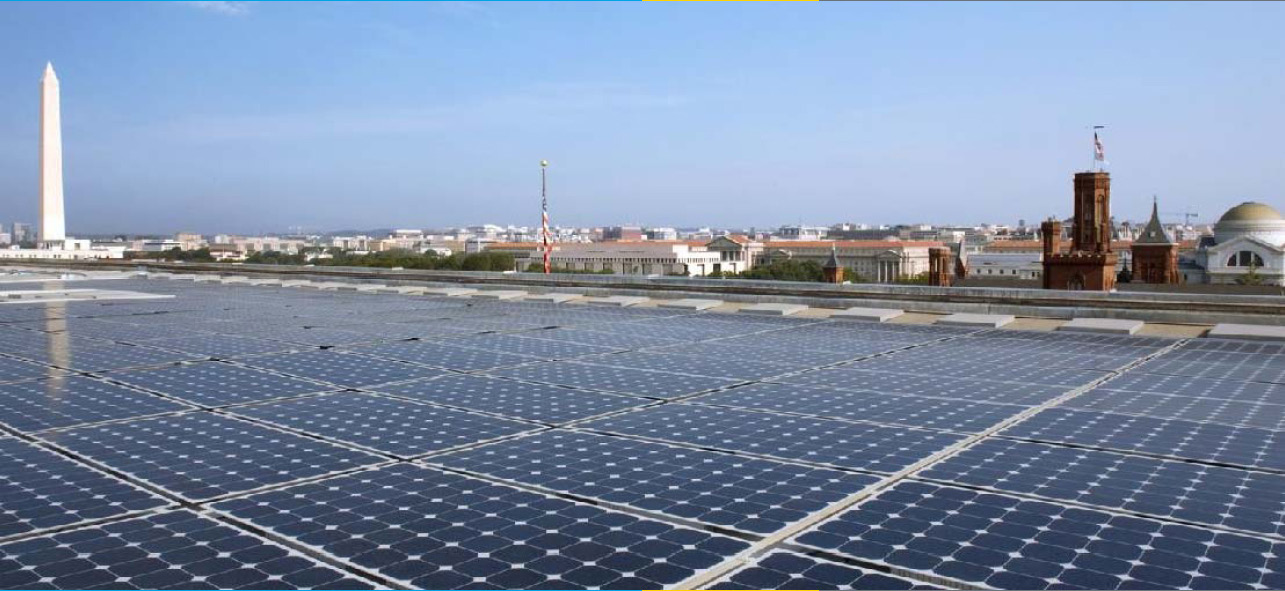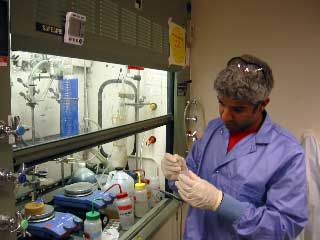- Can We Build a Better Solar Cell with Nanocomposites (MS’06)
- Establishing Iron Pyrite (FeS2) and Chalcocite (Cu2S)as a Novel Material Pair for Low Cost Photovoltaic Devices (PhD’08)
“Every four minutes some small business or homeowner is going solar. In a sense, we’re going through a transition here. The industry is going through a transition that we’re only seeing the beginning of.” – Dr. Cyrus WadiaDr. Cyrus Wadia (PhD’08) knows about transitions. He has been a policy advocate, business entrepreneur and scientific innovator for clean energy and human welfare prior, throughout and since his time at ERG. He has not only observed but has been part of the change in the world’s switch to solar. His multiple hats and his work on the frontline edges of policy, economics and science made him a perfect fit for the interdisciplinary program at ERG.
 Currently, Cyrus is the Assistant Director for Clean Energy and Materials R&D at the White House Office of Science and Technology Policy (OSTP). He focuses on advancing innovation and deployment of material systems at OSTP. On leave from Lawrence Berkeley National Lab (LBNL), Cyrus is well familiar with working on novel advanced materials as his research on new kinds of solar cells garnered him the MIT TR35 Young Innovator award.
Currently, Cyrus is the Assistant Director for Clean Energy and Materials R&D at the White House Office of Science and Technology Policy (OSTP). He focuses on advancing innovation and deployment of material systems at OSTP. On leave from Lawrence Berkeley National Lab (LBNL), Cyrus is well familiar with working on novel advanced materials as his research on new kinds of solar cells garnered him the MIT TR35 Young Innovator award.
 Cyrus makes a new batch of material for PV devices.
Cyrus makes a new batch of material for PV devices.
- Cheap – based on material choice and recent advances in nano science, Cyrus and his colleagues believe they have achieved a material system that could scale at 2 to 3 orders of magnitude lower in cost than modern PV technologies
- Abundant – the cornerstone of Cyrus’ economics work, all materials used in the PV system are earth abundant and non-toxic
- Fast – by sacrificing some power conversion efficiency, this new architecture may facilitate a roadmap to TWh of production of PV in a meaningful timeframe
Cyrus talks about how using non-toxic Earth abundant materials can make solar an economically viable option for millions presently without electricity. (2009)
Prior to his doctoral studies at ERG, Cyrus spent six years in the high tech industry as an engagement manager with R.B. Webber & Co. and a senior product manager with AvantGo. Cyrus specialized in launching new technologies to market and completed several successful new product introductions while with AvantGo. Cyrus earned both his S.B. and M.S. in Chemical Engineering from MIT. Cyrus has been advising at the White House OSTP since 2010. He is currently on leave from the Haas School where he is the co-director of the Cleantech to Market Program. He is also on leave from LBNL where he has been serving as both a guest scientist and organizer of Berkeley Lab’s new Carbon Cycle 2.0 initiative. Links Updated: June 2014